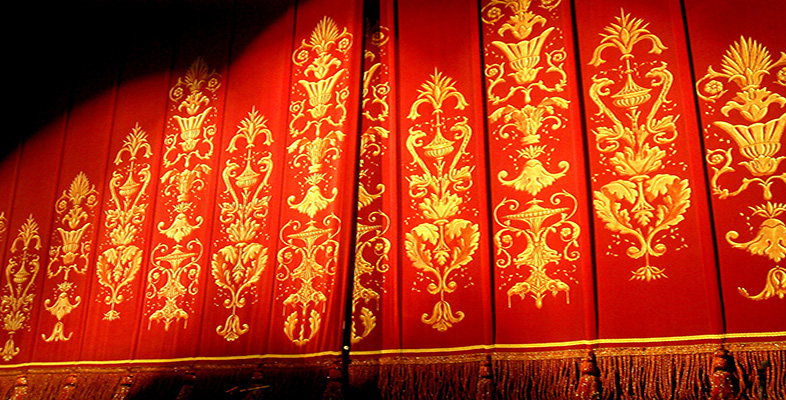Glossary
- Amphitheatre
- a circular structure with seats rising behind and above each other around a central open space or arena; originating in classical Greece, they are the first known specifically designated theatre spaces.
- Apostrophe
- a rhetorical convention in which the speaker either addresses a dead or absent person, or an inanimate object or abstraction. An apostrophe can also refer to a speaker's address to a particular member or section of the audience.
- Anagnorisis
- a scene of recognition or discovery.
- Aside
- a short speech spoken sotto voce to the audience or another character on stage, with the presumption that other characters cannot hear what is being said.
- Blank verse
- unrhymed iambic pentameters.
- Chorus
- group of male singers and dancers who took part in and commented on the action of the play, providing a summary and a narrative link. The name Chorus is also given to the lyric or poetic sections of the play performed by the Chorus. In Elizabethan and modern drama the Chorus is usually a single actor.
- Climax
- the moment of crisis leading to the denouement or resolution.
- Denouement
- the unravelling of the complications of the plot at the end of a play.
- Dialogue
- speech between characters in a play.
- Enjamb(e)ment
- where the sense of the poetry runs on from one line to the next. The ends of the run-on lines are not marked by any punctuation.
- Exposition
- information given at the beginning of a play that is needed in order to understand the action of the play.
- Iambic pentameters
- the basic metre of verse written in English, in which each line has five unstressed syllables and five stressed syllables arranged in pairs, as in: ‘Put out the light, and then put out the light’.
- Monologue
- varieties include the Dramatic Monologue, which is a kind of poem in which the speaker addresses a silent audience, and the Soliloquy. Samuel Beckett's Not I, in which there is only one character, is also an example of a monologue – an extended speech by a lone character.
- Naturalism
- naturalist drama of the late nineteenth-century emphasizes the roles of society, history and personality in determining the activities of its characters. It is often expressed as a conflict between the character and their environment; a style associated with the work of August Strindberg and Henrik Ibsen in dramatic art, and rooted in the naturalistic novels of Emile Zola.
- Oratory
- the art of public speaking.
- Performance
- the interpretation and presentation of a dramatic text on stage by actors. Like many of the terms associated with drama, this is a term with a range of meanings.
- Peripeteia
- a reversal of fortune, a change in the state of affairs.
- Proscenium arch
- the name derives from the Greek work, skene. Originally skene referred to a building for actors changing at the back of the acting area in a Greek amphitheatre; it therefore implied a version of permanent sc(k)enery. Thus, proscenium denoted a space in front of the back scenery. Proscenium is now taken to mean the front opening of the stage and its surround is called the proscenium arch.
- Realism
- theory of the real or representation of what the artist or audience broadly agree is true to life. This is one of the trickiest concepts in the analysis of art, performance or otherwise. Always remember that a play offers the representation of reality, not ‘reality’ itself.
- Rhetoric
- the art of using language, spoken or written, for persuasion. Rhetorical rules and figures of speech were formulated by classical writers and are still used today.
- Soliloquy
- a speech, usually quite lengthy, delivered by a character alone on stage. See also Monologue.
- Stage directions
- notes incorporated in a script to indicate entrances and exits, movement, style of delivery, details of location, scenery and effects.
- Stichomythia
- dialogue of alternate single lines.
- Wings
- both the side areas of the stage and the painted, canvas-covered flats masking that area and forming part of the set.
